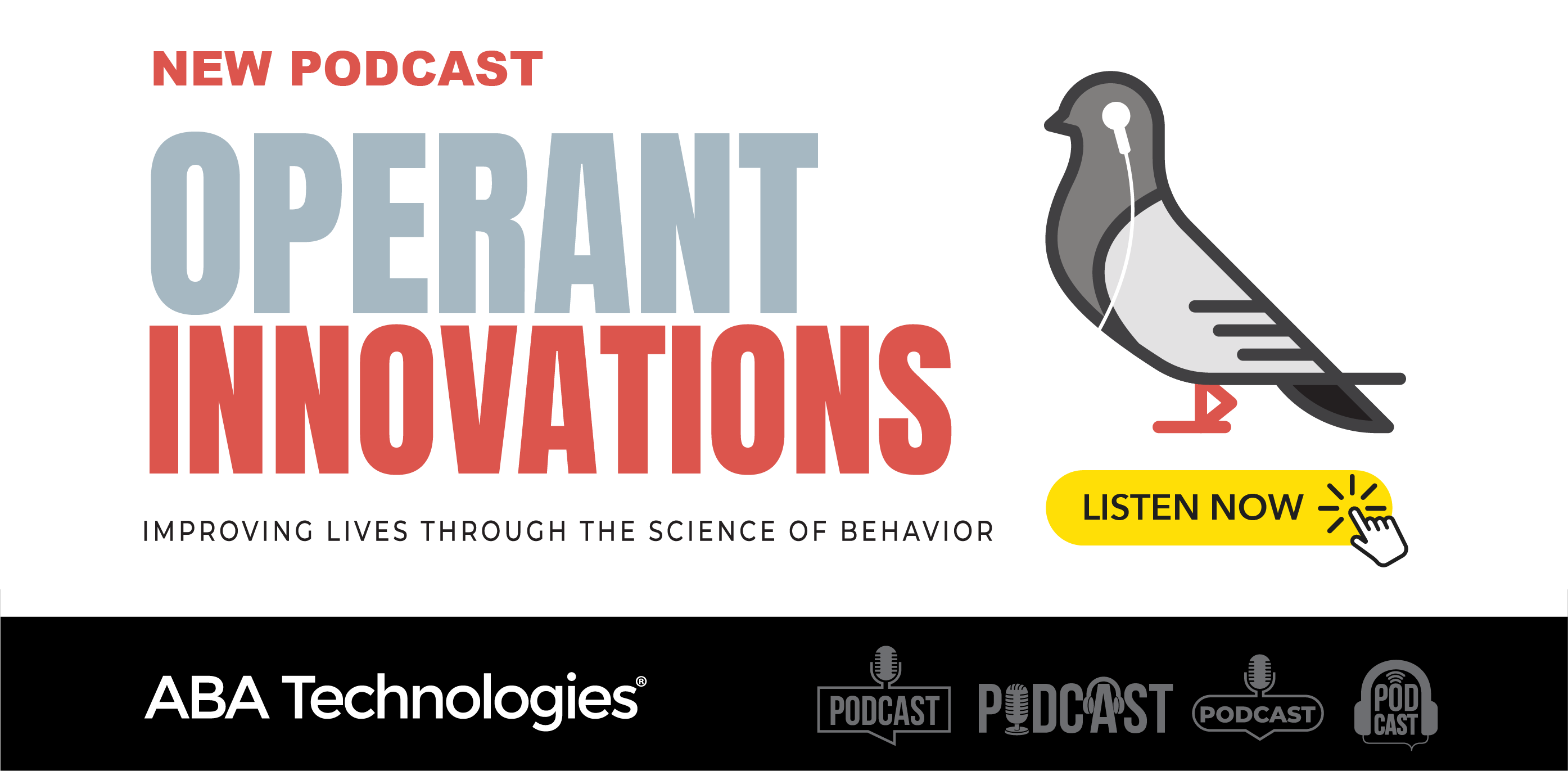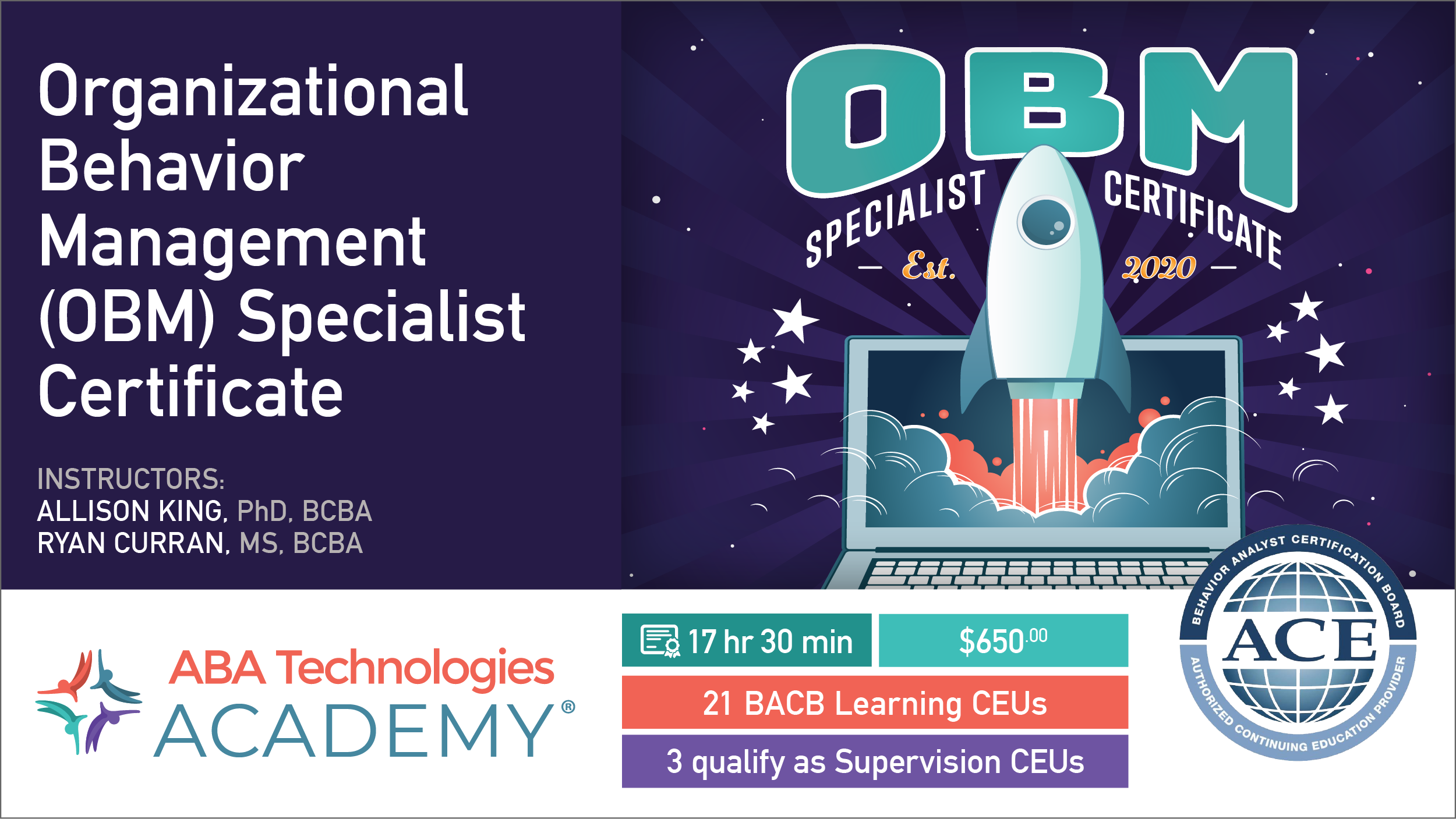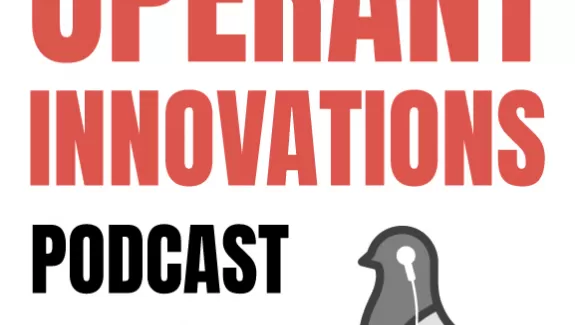
The Parallels between ABA and OBM
The Generality of Practice
Applied Behavior Analysis is more than just a bag of tricks known as Discrete Trial Training, the VB-MAPP, and token systems. However, when we begin to conceptualize our science as such, we lose the fundamentals upon which we found them. We rely too heavily on them in practice, and we fail to individualize our services. Our job is to translate the science into practice and use those tools as they work for the behavior we target for change.
 Organizational Behavior Management (OBM) is a sub-discipline of ABA, referring to ABA applied to organizational settings. However, despite being part of a greater whole, there seems to be a disconnect between ABA and OBM. Some ABA practitioners have not heard of OBM or fully understand what it is, despite its close association with the field and applicability to clinical settings.
Organizational Behavior Management (OBM) is a sub-discipline of ABA, referring to ABA applied to organizational settings. However, despite being part of a greater whole, there seems to be a disconnect between ABA and OBM. Some ABA practitioners have not heard of OBM or fully understand what it is, despite its close association with the field and applicability to clinical settings.
A lot of ABA’s recognition is for its application with autistic children. However, behavior analysts have also worked in oil, animal rescue, restaurants, and manufacturing. The reality is that “none of the As in ABA stand for autism” (Dillenburger & Keenan, 2009). We can go anywhere there is behavior, and behavior is everywhere.
The tools a practitioner learns do not get thrown out just because the practitioner has changed environments. Practitioners in any setting use the principles of reinforcement, motivating operations, discriminative stimuli, and prompting strategies. While looking into OBM from a clinical past appears to be a kaleidoscope of jargon at first glance, in reality, it’s just rebranding terms from ABA. Pinpointing, incentives, and Organizational Behavior Management in themselves are just operational definitions, reinforcers, and Applied Behavior Analysis, respectively.
Skills a practitioner learned in a clinical setting may transfer very well to a business setting. Learning how to talk to parents involves the same concepts and skills as talking to a business manager, such as editing language from jargon and discussing in terms valuable to the client. For example, when an analyst aims to improve communication between an employee and their boss, the analyst targets behaviors such as manding for information, tacting, and following instructions.
A practitioner aims to get results in any setting. In organizations, those results may look like a return on investment, lower turnover rates, or an increase in safe behavior. In clinics, the results look like a child making a friend, fewer disciplinary actions in school, or speaking their first words, to name a few. In both, the analyst is considering the behavior that will produce those results.
 In my clinical background, I saw the parents and the other therapists as a significant portion of my clients’ environments. I felt frustrated at times that behavior interventions were out of my control whenever they were not implemented the way they should be. If I wanted to get the most change in my clients, I had to encourage their involvement in the behavior-change process. I had to train and shape the behavior of the parents and the therapists. Out of both need and pure fascination, I started to learn about performance management and OBM. I began to see opportunities for behavior change everywhere. Not only was it incredibly interesting but it was also a relief to know that those frustrations I had before were not out of my control.
In my clinical background, I saw the parents and the other therapists as a significant portion of my clients’ environments. I felt frustrated at times that behavior interventions were out of my control whenever they were not implemented the way they should be. If I wanted to get the most change in my clients, I had to encourage their involvement in the behavior-change process. I had to train and shape the behavior of the parents and the therapists. Out of both need and pure fascination, I started to learn about performance management and OBM. I began to see opportunities for behavior change everywhere. Not only was it incredibly interesting but it was also a relief to know that those frustrations I had before were not out of my control.
When I transitioned to a non-clinical setting, both with Esports and ABA Technologies, Inc., generalizing my skill set was the biggest challenge for me. What would I even do? Where do I start? What would I say? I can’t say “good job asking” to an adult. To me, these environments were “OBM” settings, and I knew nothing about business or organizations or working with adults. It was with the help of both my mentor in Esports, James Riswick-Estelle, and my supervisor at ABA Technologies, Inc., Shauna Costello, that I learned I had the skills. I recognized that I had already done all of this in a clinical setting and that these environments were hardly any different when it came to applying behavior analysis.
 In Esports and with James’ guidance I assessed existing skill sets, targeted verbal behavior for improvement, and provided immediate praise and recognition contingent on those target behaviors. At ABA Technologies, Inc., with Shauna’s systems approach to behavior analysis, I learned different ways to apply task clarification, approaches on how to take data on performance, and to reinforce manding for information and tacting internal events such as concerns and confusion about an assignment. These were all things I had already done and saw the value of in a clinical setting; I just had to learn to generalize those behaviors.
In Esports and with James’ guidance I assessed existing skill sets, targeted verbal behavior for improvement, and provided immediate praise and recognition contingent on those target behaviors. At ABA Technologies, Inc., with Shauna’s systems approach to behavior analysis, I learned different ways to apply task clarification, approaches on how to take data on performance, and to reinforce manding for information and tacting internal events such as concerns and confusion about an assignment. These were all things I had already done and saw the value of in a clinical setting; I just had to learn to generalize those behaviors.
If you’re looking to transition your training in ABA to other environments, I recommend that you check out a descriptive blog on different types of full-time work in OBM, as well as the OBM series blogs that discuss various approaches in OBM and how to market yourself to those jobs. However, it is important that you learn about those settings and gain an understanding of the results they look for, particularly in business environments.
Operant Innovations 024 | Behavioral Consulting in Esports

What can you do with your degree other than clinical work? How about sports consulting?!
This week we are joined by master's student Victoria German, PhD student James Riswick-Estelle, and FIT Esports Director Dana Hustedt as they speak about the collaboration between behavioral consulting and Esports.



